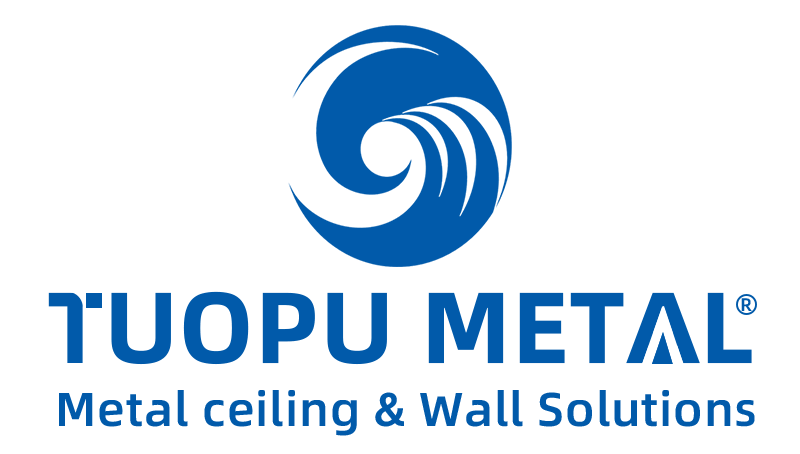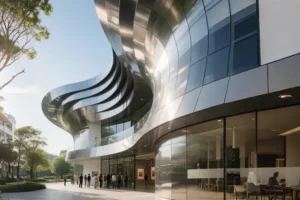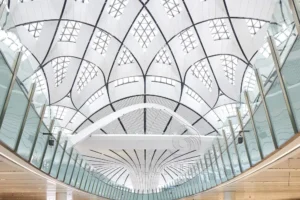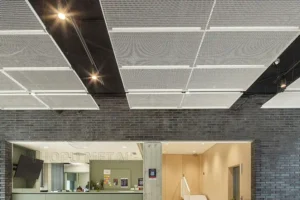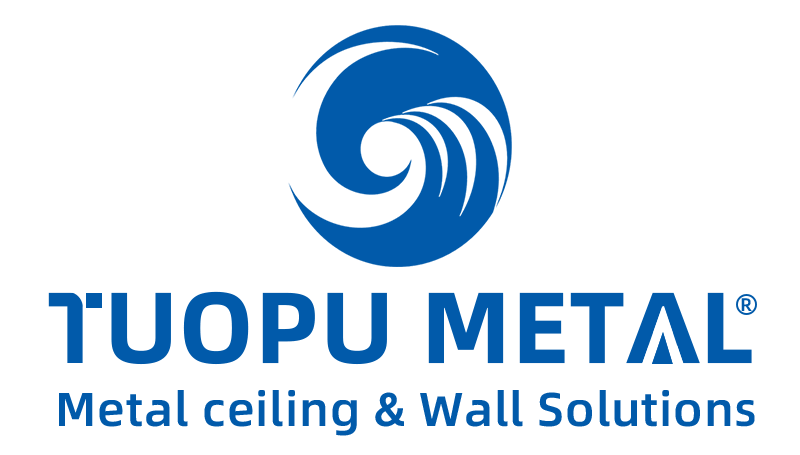Walls are no longer a building’s only requirement in today’s world. The building seeks strength combined with style, as well as smart structural design. When it comes to the exteriors of a building, architects think differently due to the use of aluminum facade systems. These systems are strong, yet lightweight, and do not rust or fade over tijd. They enable bold, unique and daring designer creations. As citysovertake smaller towns, subsets of suburbs are sprouting up and hardware strips are becoming commonplace, the functional and aesthetic facades of aluminum add to the beauty of the structure.
This article will look into the reasons which make aluminum facade systems the number one choice for modern architecture.
Why Aluminum? The Key Benefits of Choosing Aluminum Facade Systems
Lightweight Yet Strong
As is the case with most metals, aluminum provides structure without too much added weight. This makes installation easier and reduces the load on the structure. This further leads to reduced construction costs, faster project completes, and expedited timelines.
Weather Resistance
Unlike steel which can rust and wood which scrubs, aluminum stands up against corrosion, UV damage, and moisture. It is resistant to rust and preserves it’s appearance, while performing it’s function, in a wide variety of climates with greatly reduced upkeep.
Design Flexibility
Smooth modern panels and elaborate decoration alike. Aluminum facade systems enable all types of customization as it can be perforated, textured, or coated in various finishes. This grants engineers limitless design flexibility enabling a multitude of architectural masterpieces.
Types of Aluminum Facade Systems & Their Best Uses
Curtain Walls
These are often seen in modern high-rise buildings because of their appealing, seamless design. Curtain walls assist in lightness which helps in decreasing the weight placed on the building. They let in a lot of natural sunlight while also providing insulation and protection from the weather. Most architects design office towers, hotels and commercial buildings using curtain wall architecture in order to give the structure an impression of spaciousness.
Perforated Panels
They serve both practical purposes and can be considered as artworks for construction designs. The perforations in such panels can be made in unlimited shapes which tell a story about the building’s exterior. In addition, they enhance the circulation of air as it can move through, thus, they are ideal for use in parking structures, sports facilities, and any location that requires ventilation but has controlled visibility.
Cladding Panels
The embellishing features of a structure are given attention, but there is also the need for protection from the wind, rain, or strong sun. Bausing cladding is a great choice since it comes in various designs and colors as well as serves an important purpose by offering an additional protective layer that can enhance the thermal efficiency of structures when attached to them.
Louver Systems
Sunlight and the flow of air need to be regulated for proper air circulation in buildings and to reduce excess heat indoors. This is where the need for louvers arises. Ideal for hot and tropical areas, louvers enable ventilation as well as trapping hot air inside. These air control systems are mechanically operated and are ideal for offices, shopping malls, and government buildings.
Customization Trends: How Architects Are Pushing the Limits
3D Textured Panels
The traditional definition of flat surface is considering outdated. Aluminum panels featuring embossed patterns, geometric shapes, and layered designs are now used by architects to give depth, interest, and transform buildings into statements. These panels are commonly used in cultural centers, office towers, and luxury retail locations – anywhere that has an eye-catching aesthetic.
Wood & Stone Finishes
The combination of warm wood and strong stone is one of the most preferable materials in modern design. While appealing, natural resources are difficult to maintain and may not endure extreme weather. Aluminum panels designed with wood grain or stone textures offer the best of both worlds, retaining the look of organic materials while benefiting from aluminum’s durability, fire resistance, and lightweight. These are mainly used in residential complexes, commercial buildings, and eco-friendly constructions.
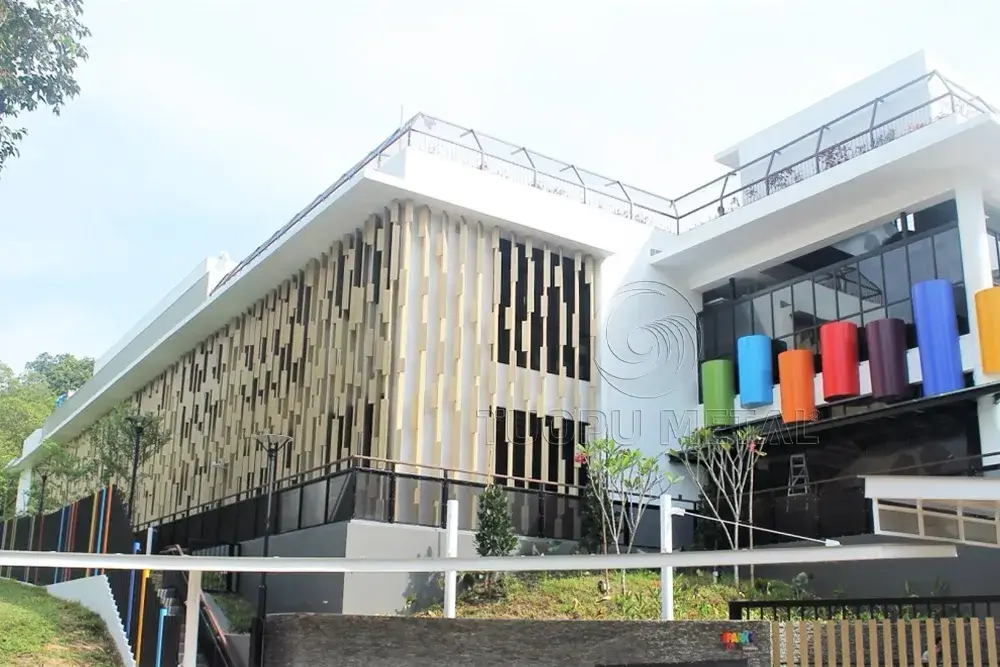
Integrated LED Facades
Buildings serve not only as structures but as a visual experience. Horizontal and vertical outlines of the building can be accentuated with branding and animated which makes these dynamic displays interact with the units and outline contour of the building. This is made possible through integration of led lighting into aluminum facades. This approach is increasingly applied in hotels and shopping centers where greater focus is drawn to use of light.
Sustainability & Energy Efficiency: The Green Side of Aluminum Facade Systems
Aluminum is one of the most eco-friendly materials in construction. Also, unlike other facade materials, aluminum can be endlessly recycled without losing its quality, making it highly sought after by architects and developers focused on green building certifications. Unlike other materials, facades constructed out of aluminum are able to stand the test of time. At the same time, dollar bills don’t need to be poured in endlessly in maintenance when using aluminum. Most of today’s aluminum facades are manufactured from recycled materials which further reduces the carbon footprint of the project.
Energy efficiency and sustainability is a major concern for modern architecture. Aluminum facade systems now come with advanced insulation technology like thermal breaks and double-skin designs which regulate the indoor temperatures. Such systems assist buildings in hot regions to stay cool and retain heat in colder regions, minimizing energy consumption. These practices lower operational costs and reduce the carbon footprint of the structure.
The future of Solar Energy is not only for beauty. With more architects adding photovoltaic panels into aluminum cladding systems, the exteriors of buildings are highly transformed into powerful energy-producing surfaces. These integrated systems enable transforming structures to harness renewable energy while maintaining elegance. This direction is especially beneficial for smart city projects, high-rises, commercial buildings, and other multidisciplinary engineering projects focused on enhanced energy self-sufficiency.
Choosing the Right Aluminium Facade Supplier
Material Quality
The structure and performance of an aluminum facade is subject to the quality of an aluminum slab. Mills, or suppliers for that matter, who are trusted should issue an aluminum stern of a grade that meets industry requirements which has certifications for corrosion, fire, and weather resistance. Also, testing reports for strength and durability needs to be done as well, especially for the facade and its ‘look’ over years.
Customization Dimension
A good supplier could have a robust program with varying level of surface treatments. Brand new 3D modeling software coupled with high precision CNC machining allows unique textures or custom colors to be designed.
Custom Design Implementation
Being a valuable commodity, construction has deadlines for each milestone set, and that applies for when receiving materials as well. Every supplier works within these confines, but sometimes a supplier has more advanced ops. A selected company with reliable freight services safeguards schedules while strong marking ensures secure delivery of timely, undamaged materials.
Conclusion
Aluminum facade systems continue to change how buildings look and perform. Architects and developers use them to create bold designs that are strong, lightweight, and durable. With better technology, facades now offer more customization, energy efficiency, and sustainability. Recyclable materials, improved thermal performance, and integration with solar panels make aluminum facades a smart choice for the future.
As design trends push boundaries, aluminum allows for more creative freedom. Whether for high-rises, commercial spaces, or luxury residences, these facades provide both beauty and function. Choosing the right materials and supplier ensures a project that stands out.
Explore aluminum facade systems or contact Tuopu Metal for aluminium facade solutions to turn your vision into reality. Their unmatched expertise will enable them to deliver high-quality designs that make a statement and are innovative on all levels.
